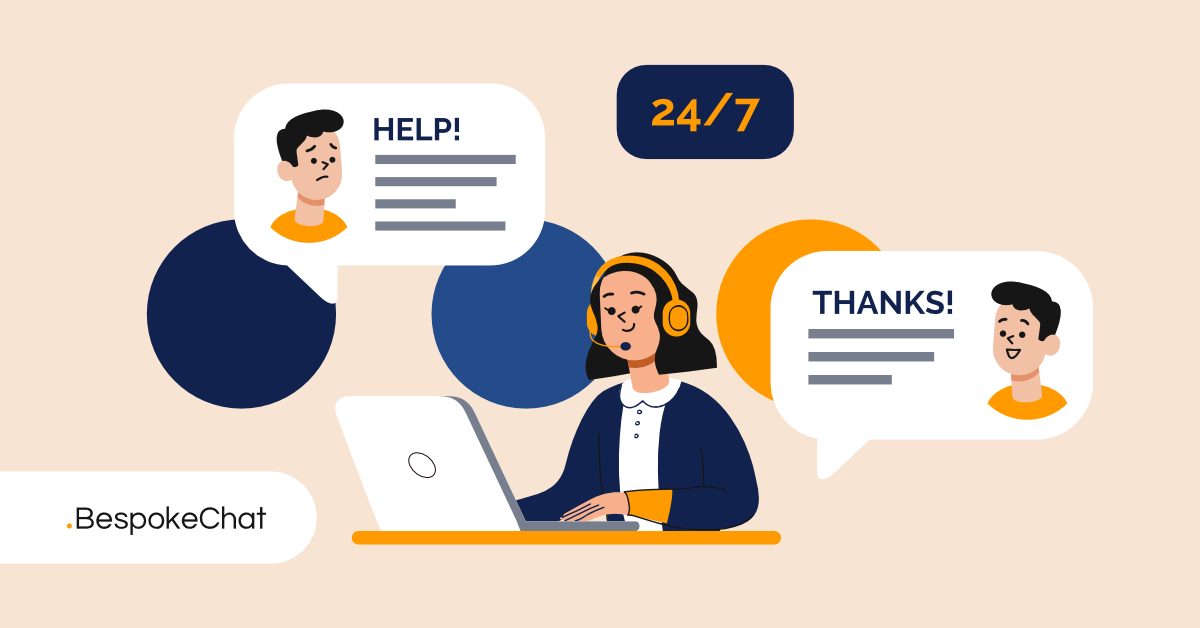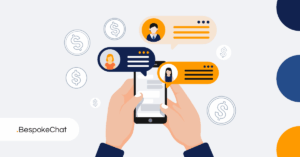It’s 10 PM on a Tuesday. One of your future customers has just tucked their kids into bed and finally has a quiet moment to explore their next big decision: buying a car. They’re browsing your site, comparing models, getting excited… and then a key question pops into their mind. They spot your chat window – a glimmer of hope for a quick answer – but it simply says: “We’re offline. Leave a message.”
Just like that, the moment is gone. The question goes unanswered. And with it, the customer’s momentum. They might close the tab and head to a competitor who is available. In the digital world, your showroom never really closes. But when someone’s ready to talk, even late at night, is your sales team there to meet them?
In our last article, we talked about how chat isn’t just a support tool but a powerful sales channel. Now it’s time to look at something just as important: being available when your customers need you most.
The typical nine-to-five schedule belongs to the offline world. Your website is always open, and your customers browse whenever it suits them – whether it’s late at night, during a lunch break, or while waiting in line. That’s why true proactive chat means being present not when it’s convenient for your team, but when it’s meaningful for your customer. Showing up at the right moment can turn a casual visitor into a loyal buyer.
Your Customers Don't Shop 9-to-5
Think about your own online shopping habits. Do you only browse during your work lunch break? Or do you find yourself scrolling through products late at night, early in the morning, or during a lazy Sunday afternoon? Your customers are no different. Data consistently shows that a significant portion of online traffic and sales conversions happen outside of standard business hours.

Ignoring these “off-peak” hours is like closing your physical store just as a crowd of eager shoppers arrives. Every unanswered chat is a potential lead walking away. The immediacy of chat is its greatest strength; when that immediacy is replaced by a form and a promise of a response “the next business day,” you sacrifice your biggest advantage. A customer who has to wait is a customer who has time to reconsider, to find alternatives, or simply to lose interest.
The Power of an Instant Connection
Let’s visualize the impact of availability with two common scenarios for a customer Browse your website at night.

Scenario 1: Chat is Offline
Customer 10:50 PM
Chat window offline 10:50 PM
Customer 10:52 PM
Customer leaves.
The lead goes cold, or at the very least, you are now competing against the next dealership they visit.
Scenario 2: Chat is Online
Customer 10:15 PM
Chat agent 10:15 PM
Customer 10:16 PM
Chat agent 10:16 PM
The customer gets an instant, reassuring answer.
The agent builds trust and smoothly moves the conversation toward the next step in the sales funnel.
The difference is night and day-literally. The second scenario not only saves a potential sale but also creates a positive customer experience that builds brand loyalty.
Managing Your Team's Availability in LiveChat
Achieving broader coverage doesn’t necessarily mean you need a massive, 24/7 team. It’s about being smart and data-driven. LiveChat provides the tools to manage this effectively.
- Analyze Your Reports: The first step is to dive into your LiveChat Reports. Look at the “Chat traffic” and “Availability” reports to identify your peak hours. You might be surprised to find that your busiest times are between 7 PM and 11 PM, or on Saturday mornings. Use this data to make informed staffing decisions. You can learn more about reports here: Reports in LiveChat.
- Use the Work Scheduler: Once you know your peak times, use LiveChat’s Work scheduler to create flexible shifts for your agents. Perhaps you can have one or two agents cover the evening shift instead of having your whole team online. This allows you to extend your hours of operation without drastically increasing costs. Here’s a guide to get you started: Work scheduler.
- Optimize Your Offline Form: While the goal is maximum availability, there will be times you’re offline. Make sure your Offline form is working hard for you. Customize it to ask relevant questions that will help your team provide a comprehensive answer later. Crucially, set a clear expectation for a response time (e.g., “We’ll get back to you within 8 hours.”).
When you extend your hours, managing agent workload and customer wait times becomes critical, especially with a smaller team covering off-peak shifts. This is where Super Queue notifications becomes an essential tool for managers.
Super Queue notifications gives you a real-time overview of your chat queues and can send you automatic alerts based on rules you define. For example, you can set an alert to be notified via email or a browser notification if:
- The number of customers waiting in the queue exceeds three.
- The longest waiting time for a customer surpasses 60 seconds.
This allows a manager (who might not be actively watching the dashboard) to see that the evening shift agent is getting overwhelmed and can quickly log in to help handle the traffic. It’s a safety net that ensures your customer experience doesn’t suffer as you scale your availability, helping you capture those crucial late-night leads without burning out your team.
Being there for your customers is no longer a luxury; it’s a core tenet of modern digital sales. By analyzing your data and using the right tools, you can ensure that when a customer is ready to talk, you’re always there to listen-and to sell.



![Read more about the article [Academy] Be available for your customers](https://www.bespokechat.com/nowa-strona/wp-content/uploads/2020/07/artem-beliaikin-N35J0N8ZglQ-unsplash-300x169.jpg)
